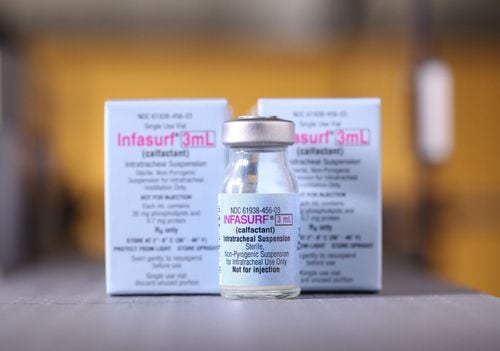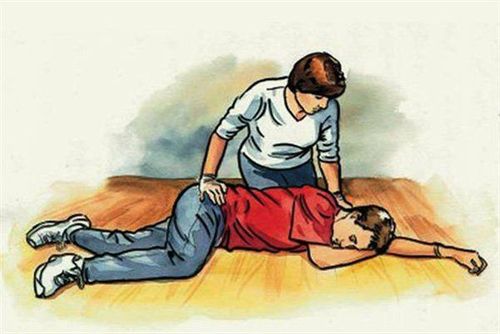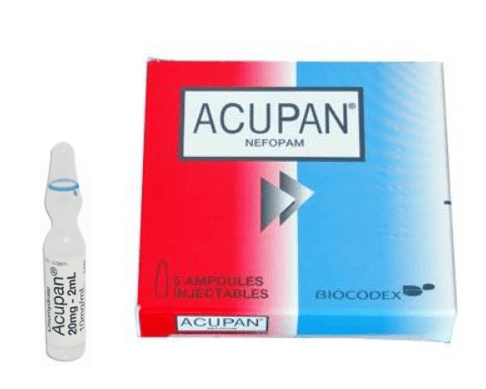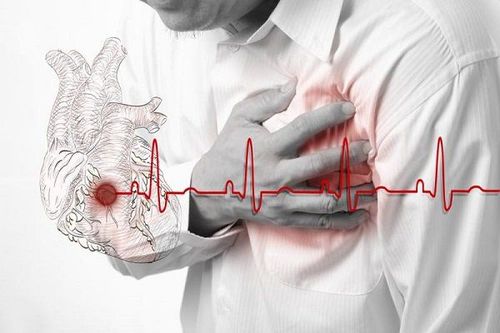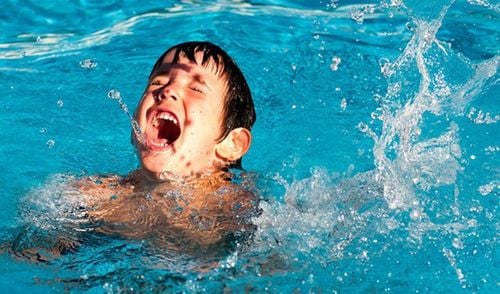This is an automatically translated article.
The article is professionally consulted by Master, Doctor Tong Van Hoan - Emergency Medicine Doctor - Emergency Department - Vinmec Danang International Hospital. Doctor with 10 years of experience in the field of Emergency Resuscitation.In life, equipping yourself with first aid methods in case of injury or apnea, cardiac arrest due to drowning, asphyxiation, electric shock... is extremely necessary. Among them, artificial respiration is the most basic technique. So how many methods of artificial respiration are there?
1. What is CPR?
Artificial respiration in English is artificial respiration, this is a method to support people who are no longer able to breathe on their own for some reason. The purpose of artificial respiration is to make the outside air into the lungs and the air inside the lungs out to provide oxygen to the patient.Apnea is an emergency emergency because the patient cannot breathe on his own, leading to a lack of oxygen supply to the cells, the most important of which is lack of oxygen to nerve cells and leads to brain death.
Mandatory artificial respiration method must be performed immediately when the patient stops breathing, performed at the place of injury or accident before thinking of taking to medical facilities. This increases the likelihood of a patient's life being saved.
2. Causes of suffocation and signs to recognize
Asphyxiation is an extremely dangerous emergency, several causes can lead to this phenomenon:Drowning: Asphyxiation occurs due to water overflowing in the lungs, preventing air from entering the lungs to carry out the process. Respiratory. Burial: Some accidents such as tunnel collapses, wars, bombs, earthquakes, etc., cause victims to be buried by many different things, leading to chest compression, soil and sand filling in the nose, mouth, and roads. rapid suffocation. Inhalation of Toxic Gases: Asphyxiation occurs because the patient inhales oxygen-deficient air and replaces it with other toxic gases such as CO. Upper respiratory tract obstruction: the airways are blocked and obstruct breathing, asphyxiation. Signs of asphyxiation are as follows:
Respiratory movements stop completely, chest or abdominal wall is motionless. The victim lies still or is in a coma, not awake. Pale or pale skin Touching cold hands and feet Unresponsive pulse or cardiac arrest.

3. How many methods of artificial respiration are there?
The methods of artificial respiration all have the following general principles:Perform as soon as possible: As soon as the victim is found to have stopped breathing, perform CPR methods as quickly as possible, every second every day. Minutes of cerebral hypoxia will lead to brain death and difficult recovery prognosis. Eliminate asphyxiation: Quickly remove the cause of asphyxiation before performing CPR methods. Persistence in implementation: it is necessary to perform artificial respiration until the victim breathes on his own or for a certain period of time depending on the case. CPR technique must be correct, strong enough, and frequency sufficient. The surrounding environment must be ventilated, do not let the victim lie in the cold wind or there are too many people around. There are many different methods of CPR and depending on the case, the first responder will choose the most appropriate and effective method.
3.1. Method of artificial respiration and massage of the heart outside the chest This method of artificial respiration is also known as rescue breathing and most of it must be combined with chest compressions. Steps to take are as follows:
Place casualty on back in open space, loosen clothing and belt. Make sure the airway is clear by removing the foreign body from the nose and mouth, keeping the victim's head slightly tilted (put a cushion under the neck). If the patient has increased mucus secretion, vomiting, it is necessary to wipe, clean with a cloth and put it in the patient's mouth. CPR can be given directly or indirectly through a thin cloth placed over the patient's mouth. Carry out rescue breaths: One hand covers the nose, one hand pulls the jaw down to open the victim's mouth. Then take a deep breath, then close the victim's mouth tightly and blow out all the air. Observe if the patient's chest moves up and down during rescue breaths and repeat continuously. The frequency of rescue breaths for adults and children over 8 years old is about 20 breaths/minute. For children under 8 years old about 20-30 times/minute. If the patient is found to have stopped breathing with cardiac arrest, it is necessary to conduct extrathoracic heart massage combined with rescue breathing. The frequency of both chest compressions and breaths is 30:2 (30 compressions, then give 2 breaths) Carry out this method of artificial respiration until the patient breathes on his own, immediately take him to a medical facility or emergency If it is not effective for about 30 minutes, it should be stopped because the patient is already dead.
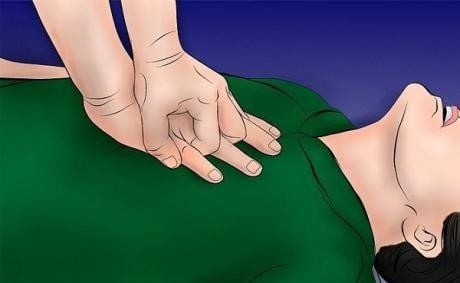
Create exhalation: Squeeze your hands firmly against the victim's back, palms pressing on the shoulder blades. The rescuer leans forward slightly, arms pressed straight (perpendicular to the chest wall) and then suddenly released. Create inhalation: The rescuer holds the victim's hand near the elbow and proceeds to pull the arm up, towards the head (but not the head) and then return to the starting position. CPR is about 10-12 breaths/minute. The Nielsen method of artificial respiration is applied in the first aid of suffocation patients due to drowning, the patient lies on his stomach to easily expel the water in the abdomen.
3.3. Sylvester artificial respiration method Sylvester artificial respiration method is often used in cases of suffocation due to burying or because the victim is not lying on his or her stomach (eg, pregnant women or people with abdominal wounds).
The first requirement is to ensure that the airway is clear, there are no foreign objects or viscous sputum that obstruct breathing.
Victim's position: Lie on your back, head turned to one side. Pillows or cushions can be placed under the victim's shoulders, with the victim's head slightly tilted back, chin up. The performer kneels at the victim's head. Perform Sylvester CPR method:
Create exhalation: The performer grips 1/3 below the victim's forearms folded up in front of the chest. The rescuer's position is forward, with both arms extended and strongly pressed against the victim's chest wall to expel air. Create inhalation: The rescuer sits down, simultaneously pulls the victim's arms towards the head, and at the same time leans back. The rate of artificial respiration is about 15-20 times/minute. 3.4. Method of artificial respiration Schaeffer Position: Place the victim prone on a straight surface, arms raised above the head, face turned to one side, ensuring ventilation. The rescuer kneels behind the victim's back, possibly sitting lightly on the victim's calves (in the case of the victim lying on a chair).
Carry out CPR method: The practitioner places his hands on the victim's back just above the pelvis, spreading his hands.
Create exhalation: The performer lifts his body slightly, pressing his hands firmly on the victim's back for about 2 seconds. This movement helps push the diaphragm upwards, forcing the air in the lungs to go out. Create the inhalation: Slowly let go of the hands completely off the victim's back so that the diaphragm descends, the lungs expand due to the natural air entering. The rate of artificial respiration is about 15-20 times/minute).
4. Evolution of artificial respiration method
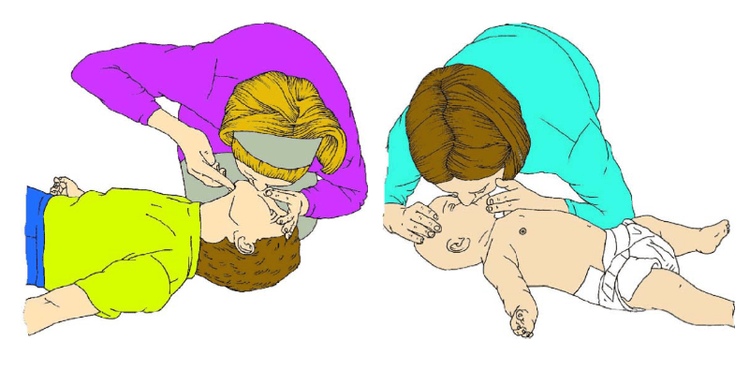
The victim's body temperature is below 25 degrees. The pupils are dilated. Appearance of bruised patches on the skin (due to hematoma). Stiff limbs (late sign). Artificial respiration is an important emergency resuscitation technique, helping patients in accidents and suffocation have a good prognosis. Accordingly, now there are many methods of artificial respiration, depending on the case of the patient in distress, there are different methods of artificial respiration.
Vinmec International General Hospital has performed CPR, resuscitation, and treated many cases in emergencies, traffic accidents and serious injuries. Accordingly, the examination, emergency and resuscitation procedures for patients at Vinmec are all carried out methodically and in accordance with the correct procedures under the guidance and implementation of well-trained specialists both inside and out. abroad brings high treatment prognosis, quick recovery time.
Please dial HOTLINE for more information or register for an appointment HERE. Download MyVinmec app to make appointments faster and to manage your bookings easily.






